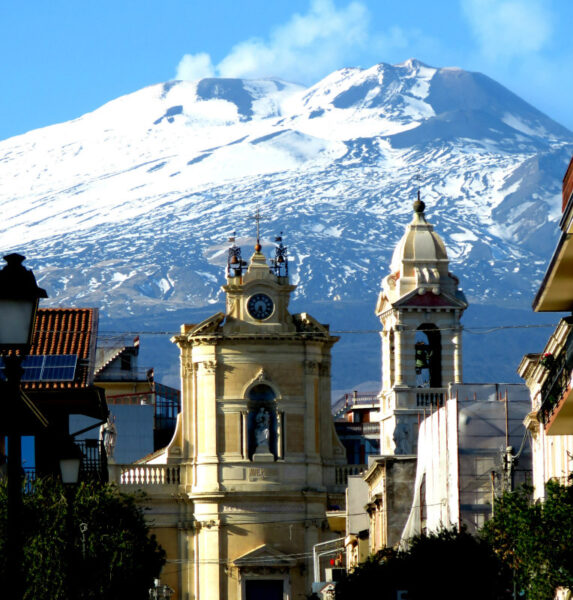There are places that are exposed to natural events more than others. And when the “natural event” is a volcano, those places happen to be fields, villages or even cities. Mount Etna is a gigantic and ancient volcano and man has always tended to colonize it because the advantages always outweigh the disadvantages. So even those who see their field “eaten” by lava two or three times will return again and again to clear and cultivate those areas. Those who experienced the 1910 eruption up close knew this very well. And even if today that particular event seems to be forgotten, it is not thoroughly.
How the eruption began
Thanks to the always precise data of the blog IL VULCANICO, we can also tell you what no longer exists today. The 1910 eruption began on March 23, with a series of seismic shocks and with some fractures that opened at high altitude – between the Central Crater and the Montagnola – suggesting that a large-scale event was about to happen.
Over the course of 24 hours, the fracture extended towards the valley reaching an altitude of 2000 meters. From there it emitted rivers of lava that quickly headed south. The fire was aiming almost without escape towards the towns of Nicolosi and Belpasso, in particular towards the village of Borrello.
Evolution of the eruption
The lava flowed downhill at a remarkable speed, but not enough to trap people. In fact, the population still had time to recover their belongings and abandon farms and villages, finding refuge at Nicolosi and Catania. Between April 5 and 7 the lava stream seemed to slow down and weaken.
A new sudden push occurred a few days later, when the lava split into two different streams which continued their journey towards Belpasso with lower but still quite sustained speeds. Finally, on April 18, at just 1 km from the town of Borrello di Belpasso, the lava stopped and began to cool. The area is identified as Contrada Cisterna della Regina.
 view from Belpasso
view from Belpasso
Visit the sites of the eruption
As mentioned above, some places are more exposed than others to natural events. And the Belpasso area had to deal with other lava flows in the 20th century. The subsequent lavas, between 1983 and 1985, covered and erased almost all the evident signs of the 1910 eruption. So today an excursion to the sites of this eruption is limited to a few stops.
The craters from which the eruption started, then baptized Mount Recupero and Mounts Riccò – in honor of two exponents of geological and natural history of past centuries – are totally submerged by meters of new rock and no longer visible. But you can visit the Cisterna della Regina place, which owes its name to Queen Eleonora d’Angiò who owned a villa here in the 14th century. You will not find a well, though, but a small altar dedicated to the Virgin Mary in memory of the escaped danger from other eruptions dating back to the 17th century!
Also dedicated to the Virgin Mary is the recently built sanctuary that stands among the lava rocks of Borrello. Where once there were fields and farms, today there is a stone quarry. There, between 1986 and 1988, a local young man, Rosario Toscano, declared he could see and hear visions of the Virgin Mary. In memory of those events, a church dedicated to the Madonna della Roccia-Our Lady of Peace was built. If religious itineraries are not for you, you can still move a few kilometers from the site of the 1910 eruption and visit the lovely town of Belpasso. From the main street you can enjoy one of the most beautiful views of the summit craters of Etna (PHOTOS BY GRAZIA MUSUMECI)